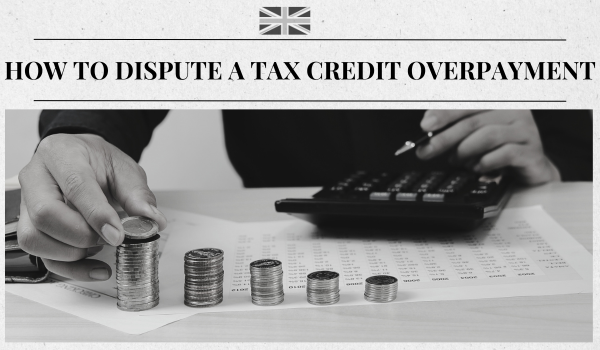Check out all relevant information on How to Dispute a Tax Credit Overpayment: Step by Step Guide here. Individuals can claim a refund if they have paid extra tax on their income, including the tax limit. Each resident whose taxes are due for the previous year must experience an additional tax added as a penalty for filing a tax after the deadline. In this article, we have summarized ‘How to Dispute a Tax Credit Overpayment.’ Proceed ahead to learn more.
Contents
How to Dispute a Tax Credit Overpayment
In order to claim a tax refund for the additional taxes you have paid, taxpayers must contact the HMRC. A taxpayer who is a non-resident of the UK can grab a form P85 from the leading portal to claim by providing relevant information regarding the annual income, taxes paid, taxes due, and the duration worked in the UK. In addition, extra proof of departure date from the country, including the flight ticket, must be submitted to the authorities.
In the UK, employers automatically deduct taxes through the PAYE Scheme. The HMRC expected taxes to be paid on their behalf periodically. Each year, an employee issues a P60 form that shows the annual earnings and the total amount of tax paid. Taxpayers can log in to the official HMRC website anytime to view the details regarding the tax due and tax paid.
Important links
Step-by-Step Guide
The easiest way to claim the refund is to file the income tax return for the particular Assessment Year. If a person is employed and has taxes on their earnings, they are entitled to a tax refund only if the tax code is wrong and HRMC has overtaxed them. Situations may often arise if individuals have recently started earning and the manager has not yet sent any information to the HMRC authorities regarding the employment.

Individuals will receive an official letter from HMRC mentioning the tax calculation. There is no need to fill out any application, as the claimant will automatically receive the refund through a cheque mailed to their residential addresses. Even if you think you have not received the correct refund amount, please collect the P60 form and visit the nearest office to resolve your query.
How to determine the employer’s contribution to paying taxes?
Determining where your employer is promptly paying the taxes deducted from your salary can be difficult. We have shared a guide an employee must follow to verify the timely tax payment.
- Workers should regularly check their payslips or electronic payment statements to ensure proper tax payments to HMRC. The payslip typically includes data regarding income tax deductions, national insurance tax, and contributions to the state pension.
- Employees must familiarise themselves with the income tax system, the national insurance tax, and the tax exemption, whether they are eligible. This knowledge can help the workers know whether they pay the correct amount of tax based on their income level and filing status.
- If employees have concerns about their tax withholdings or notice discrepancies in their payslips or P60 Forms, they should seek clarification from their manager or the department. Errors or misunderstandings may have occurred, and employers may be able to explain or correct them as needed.
- If any worker thinks that their employer is engaging in illegal activities regarding tax management, they can consult tax professionals to take legal action.
If the employer pays the taxes from your monthly income in a timely manner, you will receive correspondence from the officials regarding the tax code. A tax code is a four-digit number with a letter printed on the pay statement. The pay statement also contains all the crucial details, whether the income tax or the National Insurance number paid.
All We Know
Self-employed people can claim a tax refund on certain allowable business expenses or if they accidentally declare a high income. When they file a self-assessment tax at the end of the taxation year, they are permitted to adjust the past year’s profits, which will directly boost or minimize the tax bill for the present year.
Taxpayers must provide authentic evidence, such as bank statements and payslips, along with the P60, which can be received from the employer. Taxpayers can even use the HMRC mobile application to claim a tax refund.